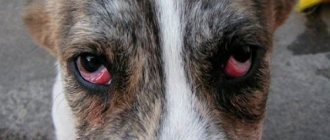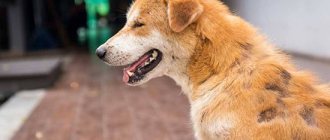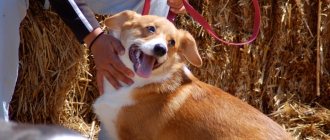- Colds Rhinitis and sinusitis
According to the activity of discussions on the Internet about issues related to diseases in birds, the first place is occupied by the problem when chickens sneeze and wheeze. And it's no wonder why. Common symptoms have many different causes. Some of them are easy to treat. And others, alas, are difficult to even diagnose in laboratories.
Most often, such problems arise in young birds with still weak immunity and among broilers
All diseases of chickens occur rapidly and from the moment the first symptoms appear until death occurs, it takes from several hours to several days. The poultry farmer must always be on guard so as not to get into serious trouble and not lose the opportunity to obtain high-quality meat and egg products.
General symptoms of diseases
Diseases are a common cause of death in poultry. This brings losses to farms. If chickens are raised on a farm, their condition is monitored by a veterinarian. If kept indoors, owners should observe the birds' behavior daily.
Many diseases begin with the appearance of wheezing. Chickens make sounds different from normal breathing. They cough, sneeze and pant heavily.
The birds' breathing becomes heavy, they begin to whistle and squeal. It's important to find out why. These symptoms indicate the presence of a cold or bronchial disease.
If your chicks begin to wheeze and sneeze, quickly identify the cause and correct it. Ignoring this is by no means a solution. There are many diseases that have these symptoms.
Coughing, wheezing and ruffled feathers are the first symptoms of the disease.
About disinfection
Disinfecting the chicken coop is something that needs to be done immediately after wheezing occurs in chickens. This is important because of the ability of some types of bacteria to exist in the environment, which can subsequently lead to recurrence of the disease. Before starting processing, you should consider moving all living creatures to any other room that has the minimum requirements for life. Only then can you begin to wash the chicken coop and treat it with special disinfectants.
Disinfection is carried out both with chemicals, which are quite toxic, and with organic ones. In the case of the first, the chickens are released after the insecticides have completely evaporated; in the second, this can be done after the completion of the procedures. It is not worth using traditional medicine and alternative means for disinfection, because they are not able to provide the necessary protection after an epidemic.
The chicken owner also needs to take care of his own protection. In no case should you neglect the means of protecting your hands, skin, respiratory tract, and mucous membranes. The best option would be to wear gloves and protective clothing. Even organic preparations should not be allowed to come into contact with the skin in order to prevent skin damage.
Treatment of sneezing and wheezing is a mandatory and necessary procedure, because sometimes the lack of necessary measures leads to the death of birds. Having considered in detail how and with what to treat chickens at home, you can not be afraid of losing your favorite birds.
Cough and wheezing with a cold
Colds are very common. Chickens are massively affected by this disease. The main reason is that the birds are too cold. The following symptoms appear:
- the respiratory tract becomes inflamed and the mucous membranes swell;
- breathing becomes difficult, the chicken breathes with its mouth open, often chokes and sneezes;
- Mucus or snot is released;
- Cough.
If the necessary treatment is not carried out, complications may develop. They can have serious consequences. Only mild colds can be treated on your own.
To avoid infecting other chickens, sick chickens should be kept in a separate cage. Calling a veterinarian will help diagnose and treat them.
Colds in broilers
A disease such as a cold is the most common not only among people. A bird can become infected with it or “catch it” after simple hypothermia, which is often the case. In addition, the reason may be hidden in drafts, which very quickly destroy broilers. Despite the fact that the disease is not fatal, chickens quickly spread it among themselves. The main symptoms of a cold infection in the chicken coop include:
- the occurrence of unexpected tearfulness of the eyes;
- accumulation of mucus in the nose;
- difficulty breathing due to inflammation.
After this, the broiler chickens sneeze. If you do not provide them with timely help, this can lead to the progression and spread of the cold, which contributes to the emergence of more serious problems. Treatment of the early stage of a cold is not difficult for humans, but contacting a veterinarian will not be superfluous. A specialist will be able to verify that there is a problem and also tell you how to treat the disease at home.
Symptoms of infectious bronchitis
If a cold does not bring relief, a more complex disease, such as infectious bronchitis, should be suspected. It is characterized by the following symptoms:
- Chicks have wheezing tracheas;
- chickens constantly sneeze, their breathing is difficult;
- the nasopharynx is filled with mucus, the bird breathes with its mouth open;
- coughing;
- Chickens' load-bearing capacity is sharply reduced.
If the infection enters the lungs of young chickens, mortality is inevitable. It takes 18 to 36 hours for the infection to spread. The virus is airborne and can “act” within a radius of 1 km.
Coughing in chickens can cause death in livestock
The disease is often complicated by inflammatory processes in the fallopian tubes, resulting in reduced efficiency. It is important to provide timely and qualified treatment.
Pathogenesis
The pathogenetic process of fatty hepatosis has not been sufficiently studied. Clinically, it is generally accepted that fatty hepatosis directly precedes the development of non-alcoholic fatty liver disease. The development of the disease, the actual accumulation of lipids, may be a consequence of:
- Increased intake of free fatty acids into the liver tissue.
- A sharp decrease in the rate of b-oxidation of acids in hepatic mitochondria.
- Increased synthesis of fatty acids in hepatomitochondria.
At the same time, the process of removing fat from the liver is hampered due to reduced synthesis of lipoproteins and the elimination of triglycerides in their composition.
Next, steatohepatitis is formed, accompanied by inflammatory-necrotic liver changes. This is the conditional “first push”. The role of the “second push” is associated with the use of certain groups of medications, which are a source of radicals that stimulate oxidative stress and the production of inflammatory mediators. As a result, microcirculation and metabolic processes are disrupted, liver ducts become clogged, and degenerative tissue changes develop.
Bronchopneumonia in chickens
An untreated cold can lead to bronchopneumonia or pneumonia. This disease is dangerous, especially for young chickens.
Chickens 2–3 weeks old are more susceptible to bronchopneumonia than adult birds.
There are many reasons associated with this disease:
- Insufficiently warm rooms, chickens are constantly exposed to hypothermia;
- Chickens are not protected from climatic precipitation in the form of rain, snow, strong winds and constant drafts;
- the disease affects the bronchi, then the lung tissue and pleura.
Etiology
The causes of fatty hepatosis are multifactorial and polyetiological. There are primary and secondary pathologies.
Among the main causes of primary hepatosis are:
- obesity;
- hyperlipidemia;
- endocrinological pathologies, namely diabetes mellitus (directly type II).
The development of secondary hepatosis is facilitated by factors such as:
- long-term use of medications with hepatotoxic potential: non-steroidal anti-inflammatory drugs, methotrexate, glucocorticosteroids, tetracycline, amiodarone, etc.;
- malabsorption syndrome, which develops with extended resection of the small intestine, ileojejunal anastomosis or stoma, gastroplasty for obesity and other surgical interventions of the gastrointestinal tract;
- rapid weight loss;
- vegetarianism with incorrect consumption of carbohydrates;
- long-term parenteral nutrition with an imbalance of carbohydrates and fats;
- chronic pathologies of the gastrointestinal tract, accompanied by malabsorption;
- abetalipoproteinemia;
- intestinal bacterial colonization syndrome;
- lipodystrophy of the limbs;
- radiation exposure.
Since fatty hepatosis is a multifactorial pathology, the causes of its occurrence may be the following risk factors:
- female;
- persistent hypertension;
- thrombocytopenia;
- uncompensated type 1 diabetes mellitus.
The disease can also be triggered by the presence of certain genetic diseases, for example, Wilson-Konovalov disease, Weber-Christian pathology, etc.
Regardless of the underlying cause of the disease, insulin resistance is present in fatty hepatosis.
Signs of bronchopneumonia
The main characteristic symptoms of bronchopneumonia are:
- A sick chicken's breathing quickens;
- wheezing becomes wet;
- runny nose, cough, chickens sneeze a lot and often;
- the activity of chickens drops sharply; they constantly sit, cannot move independently, eat or drink water;
- breathing becomes difficult, the chicken breathes with its mouth open.
In the absence of appropriate treatment, the cubs may die on the second day of life. The disease can be recognized not only by symptoms, but also by the conditions in which the chicken is kept.
Bronchopneumonia in chickens can occur due to limited space.
Factors contributing to the development of diseases accompanied by wheezing
The likelihood of the problem under consideration is higher in the absence of preventive and sanitary measures, or an erroneous approach to feeding and keeping poultry.
The risk group includes chickens kept in a poultry house with microclimate parameters that do not correspond to the physiological state and age of the object being raised. Wheezing often makes itself felt in chickens that have been poisoned by low-quality feed contaminated with pathogens. Important: some infections are transmitted from hens to offspring. Therefore, you should not take eggs for incubation from a questionable bird.
Chicken disease with mycoplasmosis
Chickens with mycoplasmosis experience severe coughing and wheezing. Is it contagious. The disease affects almost all birds and animals. Acute damage to the respiratory system occurs. The disease is transmitted:
- From chicken to offspring (transovariant);
- through the drinking system, that is, through water;
- when sneezing and coughing through airborne droplets.
Infection of poultry occurs quickly. The disease is transmitted from a sick duck to a chicken and from a chicken to a turkey. To save the herd, immediate isolation of sick individuals is necessary.
The pathogen is able to penetrate through mucous membranes. Depresses the respiratory and reproductive organs of chickens. The bird's immune system is compromised and the bird is usually malnourished.
Young chickens are most susceptible to mycoplasmosis. A sick chicken can become a source of disease for chickens. The virus can even infect an egg. Infected eggs must be destroyed immediately.
Chicken with mycoplasmosis
General rules for keeping broilers when sick birds appear
If while feeding you notice a bird with unusual behavior for the flock, take a closer look. If the feathers are ruffled, the appearance is sloppy, the posture is dejected, it’s time to put the broiler in an isolation ward and watch him. At the same time, analyze the living conditions, do sanitary cleaning in the chicken coop and consult with a specialist. If broilers are sneezing and wheezing, the doctor will determine what to treat. You should follow his recommendations in order to preserve the livestock.
Symptoms of the disease
Characteristic symptoms of mycoplasmosis are:
- The mucous membranes of the respiratory tract become inflamed, the bird breathes heavily with its mouth open;
- Frequent cough and severe wheezing, frequent sneezing;
- a large amount of exudate accumulates in the sinuses;
- the affected bird suffers from diarrhea and its condition worsens.
Mycoplasmosis has 4 periods:
- The first period is latent, lasting 12-21 days. At this stage there are no symptoms. It is not possible to distinguish sick birds from healthy ones by external signs.
- The second stage of the disease makes it possible to identify sick birds. Between 5% and 10% of chickens have symptoms consistent with mycopodazosis. The bird coughs and sneezes.
- At the third stage of the disease, the body of a sick chicken produces a large amount of antibodies.
- The fourth stage is characterized by the fact that the sick bird is a carrier of the disease.
Experienced poultry farmers have learned to judge the health of chickens by the rooster. His body is the first to react to the disease.
If he has a cough, wheezing and sniffling, then the disease should be suspected. The diagnosis should only be made by a veterinarian. Cultures of the exudate are examined for the presence of disease.
The rooster is the first to get mycoplasmosis.
Causes
The farmer's job is to carefully take care of the farm and provide the most convenient conditions for the life and growth of animals. At the first sign of unusual behavior for birds, it is important to record and check the symptoms. It would be a good idea to call a veterinarian to accurately determine the disease.
More often, hoarse sounds appear in the birds' breathing, breathing becomes heavy, and only then coughing and sneezing develop. Weak or young individuals become ill first. There are cases where the disease spread from a newly acquired brood. Sometimes on farms where birds are bred in an incubator, broiler chickens wheeze from birth. This means that the infectious disease somehow got onto the eggs or into the young bird and quickly spread throughout the entire flock. Living chickens in crowded conditions provokes the rapid development of the disease.
The main reason why broilers pant and wheeze, and then cough and sneeze, is non-compliance with housing standards. Birds do not tolerate dirt, cold and drafts well.
The broiler breed is a sensitive bird. Her immune system is not designed to withstand temperature changes and heavy stress. Any sudden change in food and drink leads to stress. This weakens the body, it becomes sensitive to pathological microorganisms.
Cough due to colibacillosis
Colibacillosis is a disease characterized by coughing, wheezing and sneezing. The disease affects young birds aged 3 to 14 days.
There are two forms of the disease: acute and chronic. The incubation period is approximately 3 days. Symptoms of the acute form of the disease are as follows:
- temperature increase by 1.5-2⁰С;
- increased thirst;
- The bird loses its appetite, which leads to weight loss and weakness;
- the process of defecation first slows down and then intensifies;
- the bird dies from sepsis and severe poisoning.
If the bird is not treated, the acute form of the disease becomes chronic.
A secondary disease may occur. This may happen in a few days. Symptoms appear gradually with further deterioration.
Chicken with colibacillosis
Why do chickens sneeze and wheeze?
Causes of strange sounds in adult chickens:
- cold;
- bronchopneumonia;
- Newcastle disease;
- goiter blockage;
- viral bronchitis;
- acute allergy – occurs infrequently.
Treatment must be carried out immediately after symptoms of the disease are detected. In hot weather, chickens often breathe with their open beaks, wheezing slightly. No therapy is required here.
Causes in broiler chickens
Chickens in the first month of life are susceptible to viral diseases and, in the absence of vaccination, get sick quite often, even with good maintenance.
Be sure to read:
Marek's disease in chickens: first signs and treatment, is it possible to eat the meat of sick birds
The main causes of wheezing and sneezing are:
- aspergillosis;
- respiratory mycoplasmosis;
- colibacillosis;
- coccidiosis;
- Nostril blockage is a rare occurrence that can occur when chickens are fed sticky porridge.
In some cases, broiler chickens may begin to wheeze due to internal developmental defects.
In this situation, treatment is ineffective. A problem bird sometimes manages to gain slaughter weight, but more often it dies within 1-2 weeks.
Causes in adult broilers
Adult broiler chickens wheeze more often due to colds and helminthic infections. Unlike chickens, they are not so susceptible to infectious diseases, although they still cannot be ruled out.
Symptoms of the disease
The most important symptoms of the chronic form of colibacillosis are considered.
- The presence of diarrhea and deterioration in appearance, the bird is ruffled with dirty feathers, the activity of the young decreases;
- birds are very thirsty and have no appetite, which leads to rapid weight loss;
- after 2-3 weeks, suffocation, shortness of breath, heavy breathing, coughing, frequent sneezing and severe wheezing appear;
- there is a characteristic crackling and crunching sound in the sternum;
- Sometimes there are attacks of paralysis and convulsions. Chickens turn their heads unnaturally and often die.
If the treatment was successful and the bird remained alive, its further development will be incomplete. It should be remembered that colibacillosis mainly affects young chickens in the first days of life. A chronic form of the disease should be suspected when wheezing, coughing and heavy breathing appear.
What to do to avoid problems
The main condition for maintaining the health of birds is disease prevention. With a large concentration of birds and a rapid change of generations, there is a great danger of the spread of a variety of infections. There are various methods and means of prevention. The most important among them is disinfection. It should be carried out even in small households. To do this, after the next batch of birds, the room is cleaned of dust and dirt, feeders, drinking bowls, and equipment are thoroughly washed and all of this is treated with special disinfectant solutions. Then the room is ventilated, dried and whitewashed. Great attention is paid not only to the completeness of the diet, but also to the quality of the feed - feeding moldy, sour, or frozen feed is not allowed. It is important to prepare feed for feeding according to the age of the birds. It is necessary to monitor the quality of water and liquid feed additives. The water should be changed at least twice a day, and the drinking bowls should be washed thoroughly, especially for early-age chickens. It is important to provide them with the correct lighting, ventilation and temperature.
By spending a certain amount on the purchase of disease prevention products, you will ultimately save a lot more money by preserving the livestock and fattening healthy young animals for meat in the shortest possible time.
What needs to be provided in a poultry house to prevent mortality: photo
This is what a disinfectant solution looks like
Lighting
Regular disinfection
System for creating a microclimate
Remember that prevention is always better than cure, which is why it is advised to initially take care of the young animals rather than raking mountains of problems later.
Material updated April 13, 2022.
Methods for treating diseases of chickens accompanied by coughing, wheezing and sneezing
Mass mortality can be prevented with early diagnosis and appropriate treatment. In the event of a cold, chicks should be handled as follows:
- The chickens are additionally insulated and protected from moisture and drafts. The temperature should be above 15⁰C.
- Young flocks should be fed with nettle decoction. You can also prepare decoctions from other herbs.
- Inhalations with medications are recommended. Essential oils are often used. If you have a large flock of birds, it makes sense to treat them with special smoke bombs.
Essential oils are good medicine
Infectious bronchitis is treated with disinfectants: aluminum iodide, chlorampyr or Lugol's solution.
If chickens are diagnosed with bronchopneumonia, their living conditions should be checked. The reason is severe hypothermia of the birds. However, this is only a preventative measure. If the disease is detected, treatment with antibiotics is necessary.
Housing conditions affecting bird health
Broilers are delicate birds and they cannot tolerate dampness, drafts, or cold in the chicken coop. If even one chicken sneezed or coughed, you need to pay attention to the condition of the room. It must be dry, including the litter. There should be no cold draft coming from the floor.
Heating lamps are placed so that there is heat near the feeder and in the far corner. Change the litter to fresh one. In a cramped room, it is necessary to provide ventilation without drafts.
If chickens are purchased from a large farm, they are already vaccinated against diseases common in the region. Then the adults will get sick first, and this will be a reason to vaccinate the livestock.
It is necessary to carefully examine the sick chicken. Perhaps he simply pecked at a large foreign body and it got stuck in the throat.
Treatment with antibiotics
Mycoplasmosis in chickens is treated with antibiotics:
- Streptomycin, oxytetracycline, spiramycin, erythromycin and lincomycin are effective. For young animals, using tiamulin is the best option;
- The dosage should be calculated at the rate of 100 grams per 500 kg of feed;
- The duration of treatment for sick chickens is 5 days;
- Egg production in sick chickens is normalized after the use of typozin. It is given as an injection. The dosage ranges from 3 to 5 mg per 1 kg of bird body weight.
Coughing, sneezing and wheezing in chickens, characteristic of colibacillosis, are also treated with antibiotics.
Biomycin, syntomycin and terramycin are the most effective.
Duration of treatment is 5 days. Repeated use of the same drugs is allowed.
Remember that if chickens are treated with antibiotics, their meat and eggs cannot be eaten for 2 weeks. The first thing to do when dealing with coughing and wheezing in chickens is to separate the sick bird from the healthy bird.
Antibiotics for chickens - effective treatment
Prevention of the problem and ways to combat it
3.1. Use of veterinary drugs
Colds.
In this case, inhalations help. The most reliable medicine is Izatizone. Used in aerosol form. Dosage – 2 ml per cubic meter of poultry house. Spray once daily. Usually a 3-day course is enough.
Laryngotracheitis.
A flock with an affected bird is completely destroyed. Before moving in new chickens, the premises are thoroughly disinfected. A preventive measure is vaccination of day-old young animals.
Bronchitis of an infectious nature.
Established chicken breeders who are faced with this infection spray dissolved Virocide in the chicken coop: drug (25 ml) + water (bucket).
Tuberculosis.
There is no cure for this disease. Obviously sick birds and the products obtained from them are burned. The poultry house is being disinfected. A mandatory procedure is to conduct tuberculin tests in clinically healthy chickens.
Colibacillosis.
Treatment is justified when the fact of the disease is established in two or three chickens. When more than 50% of the flock is affected by a pathogenic bacillus, the entire bird is destroyed. After this, deep disinfection is carried out. One of the effective drugs is Furazolidone. Introduced into feed mixtures. Can be added to water. Dosage: chickens – 1 ml/bird, adults – 3 ml/bird.
Disease Prevention
To prevent diseases, you should adhere to the following recommendations:
- constantly monitor the state of healthy reserves;
- observe and constantly improve the living and feeding conditions of birds;
- add vitamins and minerals to the food;
- disinfect regularly, especially in case of mass death of chickens.
It is impossible to predict in advance why any disease will occur in chickens. Coughing and wheezing, especially in young chicks, is often a sign that the birds are poorly cared for.
Self-medication of chickens is not always justified. The disease can become more severe and lead to mass death of chickens. Only by consulting a veterinarian can you prevent an epidemic and improve the chicken population.
Diseases of broiler chickens, symptoms and treatment at home
Like any other hybrid early-ripening species, broilers are very delicate and whimsical creatures. Growing them, especially at an early age, requires special responsibility and care. As a result of research and observations, the most dangerous periods for raising such chickens, in terms of morbidity, have been identified: from the first to the fifth day, from the twentieth to the twenty-fifth day and the period from the thirty-fifth to the fortieth day. It is on these days that diseases of the digestive tract (various enteritis, cuticulitis, gastritis) and respiratory diseases (such as sinusitis, bronchitis, pneumonia), as well as diseases of the joints, are most often observed. For timely treatment, it is advisable to identify the disease at the earliest stages, otherwise the young animals will begin to die. This requires knowledge of the main causes of diseases, methods of their prevention and treatment.
The majority of all broiler ailments are non-contagious diseases, that is, diseases caused by improper care, disturbances in feeding and maintenance. The main culprit of these problems, in most cases, is the person himself. Let's consider the main ones for possible prevention in the future.
Dyspepsia: young animals are weak, lethargic, eat poorly, diarrhea
A day-old broiler has an unformed digestive system - it has low acidity of gastric secretions and contains insufficient amounts of digestive enzymes. All this leads to the fact that if the chicks are not fed properly in the first day of life, a number of digestive tract diseases occur.
The causes of dyspepsia, in addition to an undeveloped digestive system, can be feeding moldy, sour or rotten feed, drinking poor-quality water, overfeeding after a long fast, as well as introducing hard-to-digest feed into the diet of young young animals (for example, rye, barley, fats, etc.) . A sharp transition from one feed to another or the introduction of large volumes of unusual feed into the diet (fresh grass, silage, protein feed) has a negative effect. Contributing factors to the development of dyspepsia are also defects in the feeding of the mother flock of chickens, which results in disruption of embryonic development. Predisposing factors to the spread of the disease are a lack of vitamins and minerals in the diet, as well as errors in the content. As a result of exposure to these factors, birds experience digestive dysfunction, food is retained, begins to rot and causes severe poisoning of the body. Death often results (toxic dyspepsia).
Sick young animals are weak, lethargic, eat food poorly, eyes are closed, and the neck is slightly elongated. The main symptom is diarrhea that is yellowish-green, whitish or brown, foamy, sometimes mixed with mucus. Undigested food particles are found in feces; the back area around the cloaca is contaminated with feces. What should be done to prevent dyspepsia?
- A day before the arrival of the batch of young animals, the room is heated to 32 degrees so that the bedding material becomes warm. The chicken's abdomen must not be allowed to cool down - otherwise the contents of the yolk sac will not be absorbed well, the navel will not heal well, and the work of the digestive tract will slow down.
- Shortly before the chickens are planted, the drinking bowls are filled with warm, clean water, to which ascorbic acid and glucose are added. Approximately 50 grams of glucose and 2 grams of ascorbic acid per 1 liter of water. This will help prevent the proliferation of microbes in the intestines that cause putrefactive processes, and promotes the development of lactic acid beneficial bacteria
- It is good to add a vitamin-mineral complex to weak individuals. For example, Forte Universal according to the instructions.
- It is recommended to feed them about six times a day with special food in the form of small cereals with a minimum content of complex proteins and fats (millet, oatmeal, low-fat cottage cheese, yogurt, acidophilus-yeast whey, etc.).
- Drinking water is replaced with aqueous solutions of weak disinfectants. preparations: 0.03% baking soda solution or 0.02% potassium permanganate solution.
- In the first days of life, young animals should not be given food that contains most of the lime (limestone, chalk, egg shells, shells, etc.).
- It is good to use ready-made starter food up to two weeks of age, and to prevent infections and feed poisoning, BioMos is added to the food. It binds very well to pathogens and toxins and removes them from the body. It is given according to the following scheme: before two weeks of age, 2 grams of the drug are added per kilogram of feed, for the next two weeks, 1 gram is added per 1 kilogram, and until the end of fattening - half a gram of the drug per kilogram of feed.
- A very good effect for restoring beneficial microflora after treatment with antibiotics, as well as at a very early age, is provided by drugs such as Bifidum - SHC. It is given in a ratio of 5 doses per 200 heads. To do this, the contents of the package are diluted in water and given with food or added to drinking water.
- It is important not to forget that when raising outdoors and when organizing feeding and watering young animals, it is necessary to ensure free access to water and feed for each chicken. This is especially important when distributing feed with the preventive medications listed above. Feeding limits are 2.5 cm per head, watering limits are 1 cm per head.
Bronchopneumonia: chickens wheeze, are inactive, and lose weight
Mostly young broilers aged from two weeks to twenty days suffer.
One of the factors causing bronchopneumonia is hypothermia.
Patients have all the symptoms of rhinitis and sinusitis, as well as laryngotracheitis. Their breathing is very tense, rich wheezing can be heard, the beak is constantly open, the neck is stretched forward. Sick individuals become indifferent to everything around them, eat poorly, and their general condition quickly deteriorates. Rapid thinning occurs, they sit more, feathers take on an unkempt appearance and become ruffled.
Broilers react very sharply to a lack of oxygen in the air. This can lead to diseases such as dropsy of the abdominal cavity (ascites), and hydropericarditis (dropsy of the pericardial sac) and even pulmonary edema.
To prevent these diseases, the following simple rules should be followed:
- Observe microclimate standards when raising young animals: oxygen concentration should be at least 17%, air temperature on the first day of life of young animals should not be lower than 30 degrees.
- The premises and bedding must be dry and clean.
- Avoid hypothermia during transportation.
In the event of bronchopneumonia, it is important to know what medicine should be given to broiler chickens. The greatest effect is achieved by:
- Tetracycline, neomycin, chloramphenicol, erythromycin, syntomycin, streptomycin, as well as norsulfazole, sulfadimezin.
- Belcospira oral. This is a powder form, easily soluble in water.
- Baytril, Enroxil, Enroflox. They contain a 10% solution of enrofloxacin, a new generation antibiotic.
- Gentamicin is a powder that easily dissolves in water. Its active ingredient is gentamicin sulfate.
- Colivet, Colimycin are also water-soluble powders containing a new generation antibiotic - colistin.
- Flubactin, Eriprim and Tilan - powders and ready-made solutions.
These drugs are used according to the instructions, after consulting with a veterinarian. The next large group of diseases are hypovitaminosis. Let's look at some of them.
Hypovitaminosis A: disheveled hair, refusal to eat, problems with coordination
Caused by a lack of retinol in the diet. In this case, a violation of the proper metabolism in the body occurs. A large number of avitaminosis and hypovitaminosis, and in young animals two weeks old, often appear due to the fact that the eggs are defective due to the low content of retinol and carotenoids in the yolk.
In the first days of the disease, loss of appetite, weakness, passivity, stunted growth, and ruffled feathers are noted. Then various diseases of the digestive system, respiratory system develop, and sometimes the nervous system is affected. Signs of its defeat are the following nervous phenomena: a wobbling gait, movements in a circle, chickens walk in a zigzag or as if on stilts, there are falls on their backs through the pelvis, etc. A characteristic sign of this vitamin deficiency is a weakening of twilight vision, the so-called “night blindness.” To prevent and treat retinol deficiency, feed rich in it (grass meal, carrots, etc.) or special preparations and feed mixtures are introduced into the diet.
Hypovitaminosis D: growth retardation, diarrhea, cramps, lameness
Characterized by a failure of phosphorus-calcium metabolism. In adults, the bones soften, and in young animals, rickets develops.
It takes a long time to develop and is characterized by weakness, lethargy, growth retardation, loss of appetite, bloating, diarrhea, softening of the bones and deformation of the bones. At the beginning of the disease, the bird walks poorly, lameness appears, trembling limbs, convulsions, thickening of the joints of the limbs and ribs, the head becomes disproportionately enlarged, and then they cannot walk at all.
Sick young animals are isolated in a spacious, bright room and given a walk; the diet should be balanced in vitamin and mineral composition. Patients are given fish oil and concentrated calciferol preparations, in doses that are twice the preventive dose.
Hypovitaminosis E: convulsions, movement in a circle
Chickens often get sick at the age of 3–5 weeks from birth. There is weakness, partial paralysis of the limbs, and convulsive twitching. They often move in a circle, twisting of fingers and twisting of the neck are noted; in a state of torpor, death occurs.
To prevent hypovitaminosis E, sprouted oats, grass meal or concentrated preparations of this vitamin are added to the feed. It is important to know that it is impossible to give preparations of this vitamin simultaneously with fish oil - they are antagonists.
Hypovitaminosis of B vitamins: growth retardation, dermatitis, conjunctivitis
All of them develop against the background of a lack of one or another vitamin from this group in the diet. There are a number of signs that are characteristic of group B vitamin deficiencies. These include:
- Depressed state of chickens;
- Decreased appetite;
- Noticeable slowdown in growth;
- Various lesions of the nervous system (convulsions, tilting of the head, paresis, paralysis of the legs and wings, etc.);
- Various forms of dermatitis are often observed;
- Digestion is disturbed (expansion of the goiter, “black tongue” with a lack of nicotinamide and other signs);
- Various forms of conjunctivitis develop (“bloody eye” with a lack of riboflavin, for example);
- Exhaustion often develops, which leads to the death of the bird.
To prevent these serious diseases, green feed, meat, fish, bone and grass meal, sprouted grain are introduced into the diet of young animals, and modern complex vitamins are also used, which can be either oil-based or water-soluble. They should be used according to the instructions for use at the time and in the doses indicated therein.
The next large group of diseases that cause serious damage when raising and fattening broiler chickens is a group of infectious diseases : viral, bacterial, fungal, etc. The mortality rate from these infections is very high, sometimes reaching one hundred percent. Knowledge of the signs of the most common and severe of them is an indispensable condition for the successful operation of all poultry farms, regardless of their size. Let's get to know some of them.
Newcastle disease: birds diarrhea, sneeze and become disoriented
This viral disease is characterized by a high transmission rate and large population coverage. Poultry infection can also occur in utero, so infected chickens can already be hatched.
In the typical form, the main signs are high body temperature (up to 43–44 degrees), weakness, birds stop eating, lose orientation; Most patients experience expansion of the goiter, and foul-smelling liquid begins to flow from the oral cavity. Feces become liquefied, mixed with blood, mucus and bile. Patients breathe with their beaks open, various sounds are heard due to blockage of the upper respiratory tract, chickens sneeze, trying to cough up mucus, and sometimes make “croaking sounds”; then signs of nervous system disease develop. They are characterized by paresis and paralysis, which leads to twisting of the neck, drooping wings and tail, and damage to the legs. Chickens become passive, they begin to tremble, growth is stunted, keratoconjunctivitis develops, the comb and beard become bluish. Treatment has not been developed and is prohibited due to the threat of spreading infection. In large poultry farms, birds are vaccinated against Newcastle disease with special vaccines. Private owners are not given this vaccine, so the best protection for them is to buy chickens only from specialized farms with well-established veterinary and sanitary work.
Avian pulporosis (bacillary white diarrhea)
An infectious disease that occurs acutely in chickens and in a latent form in adults.
Sick chickens are lethargic; there is no appetite, breathing is rapid, profuse diarrhea is observed - whitish droppings with a foul odor. Sometimes droppings dry around the anus and close it; feathers are matte and ruffled. They often gather in groups and squeak pitifully.
If they were infected in utero, then pullorosis develops at lightning speed and death occurs at a very early age. In chicks up to one month of age, the disease progresses slowly. But the mortality rate is still very high. In young animals aged 20 days, subacute and chronic forms are more often observed. Individuals who have recovered from the disease begin to lag behind in growth and development compared to healthy ones, but at the age of six months, birds that have suffered from the disease cannot be distinguished from those who have not been ill. No specific treatment has been developed, but for preventive purposes the use of antimicrobial drugs, especially the latest generation of drugs (Baytril, Enroflox and etc.). You can use biomycin, furazolidone, terramycin, tetracycline, biovit, polymyxin and their derivatives. Do not forget that when such a disease occurs, monitoring the sanitary condition of the litter and premises becomes especially important, because dampness and unsanitary conditions contribute to its spread.
Respiratory mycoplasmosis: breathing problems, rhinitis, broilers often die
Chickens experience loss of appetite and respiratory function is impaired. Death in young birds reaches 25%, in adult birds - 5%. The chronic course causes exhaustion. Adult broilers stretch their necks, try to cough up the exudate accumulated in the throat, and rhinitis often appears. Mucus oozes from the nasal openings, sometimes mixed with pus.
The main goal of prevention is the isolated keeping of birds of different age groups to prevent re-infection. Treatment for the disease has not been developed, so infected birds are killed and burned.
Marek's disease: lameness, visual disturbances, loss of appetite
The incidence among young animals can reach 85%. The general disease occurs at 8 - 20 weeks of age after chicks are planted. The classic form passes slowly, resulting in lameness, drooping wings and tail, and twisting of the neck. Sometimes semi-paralysis appears, which ends in recovery. A characteristic sign is a change in the color of the iris with partial loss of vision or complete blindness. Reaction to light is lost. Death can occur 1 to 16 months after the appearance of initial signs of the disease. Mortality for this form ranges from 1 to 30%.
The acute form appears more clearly and resembles leukemia in its symptoms. The disease occurs suddenly at the age of 30–160 days and is accompanied by a massive mortality of birds. Within a couple of weeks, all individuals in the herd become infected. The main symptoms are: paresis and paralysis; disruption of the digestive tract; weight loss, loss of appetite, loss of strength; unusual position of the body, head, wings, legs, tail.
How to treat the attack? Unfortunately, no successful studies have yet been conducted.
Coccidiosis: drowsiness, pale skin, convulsions and paralysis
A contagious disease caused by coccidia. Young animals suffer from it from 15 to 60 days.
The chickens move little, they are drowsy, sit with drooping wings, stop eating, and, on the contrary, their thirst is increased; they are huddled together, their fluff and feathers are tousled, without shine. The droppings are liquid, whitish-green or dark brown in color, mixed with blood. The comb and wattles are pale, sometimes with a bluish tint. There are malfunctions in the functioning of the nervous system, which are characterized by paralysis and convulsions. The mortality rate is very high and sometimes reaches 100% mark. If the course is less acute, then death occurs much less frequently. But, surviving, such individuals become “stunted” - they are inhibited in growth and development.
For treatment, medications such as Baycox and Coccidiovit are used. They are added to food or water according to the instructions. They are also used to prevent disease and are introduced in the early stages of raising young animals. It is important to comply with all standards for keeping and feeding poultry, especially to prevent dampness in the premises. After all, coccidia reproduce very well, mainly in damp, dirty litter, near drinking bowls, and are spread with contaminated equipment.
Broiler aspirgillosis: lethargy, breathing problems, wheezing
The disease is caused by pathogenic mold fungi. Their reproduction is facilitated by dirt, dampness, and poor ventilation in rooms. Thanks to this, fungal spores enter the respiratory tract of birds and begin their development there.
In the acute form of aspirgillosis, the following symptoms are observed: the sick move little, lag behind the herd, refuse food, their wings are drooping, their feathers are dull and ruffled. Then shortness of breath appears, the patients open their beaks. The disease in this form lasts from one to three days. Death reaches 100%.
The subacute course is somewhat delayed and lasts from 6 to 12 days. The signs become brighter: the bird periodically, while inhaling, pulls its neck forward, opening its beak, and grabs air. The air sacs are often affected, and inhalation is accompanied by a characteristic wheezing or whistling and crackling sound. Appetite disappears, nasal discharge appears, thirst, and then diarrhea. Paralysis sets in, and in this state the bird dies.
Prevention of aspirgillosis is strict adherence to all zootechnical maintenance standards. No special treatment has been developed. A good effect is achieved by using iodine preparations (potassium iodide or sodium iodide) with drinking water or food. They give iodized milk. These drugs are used for 10 days, then interrupted, and then the treatment is repeated.
How bird diseases manifest themselves: examples in the photo
Marek's disease
Coccidosis
Mycoplasmosis in broiler turkey poults
Pneumovirus infection
Toxoplasmosis complicated by colibacillosis
What kind of raucous sounds can a broiler make?
Healthy chickens do not wheeze or make strange noises. Usually chickens cluck with a slight hoarseness. This sound is considered normal. Moreover, if the individual is at rest, then there are no sounds at all. However, if a bird gets sick, then even if it is silent, you can hear sounds escaping from the respiratory tract, which is associated with inflammatory processes. When a broiler begins to cough, it sounds sharp, short, abrupt and completely different from a chicken clucking. At the same time, the sick individual necessarily has other symptoms: runny nose, watery eyes, breathing can be done through the beak.











